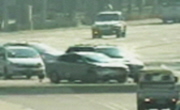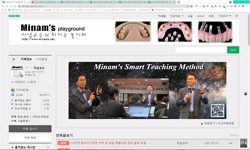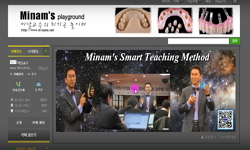환경영향평가 단계에서 환경영향의 현실화 여부 및 정도를 파악하고 문제가 발생할 경우 신속한 대응방안을 시행하기 위해 사후환경영향조사를 실시하고 있다. 소음항목의 경우 사후환경...
http://chineseinput.net/에서 pinyin(병음)방식으로 중국어를 변환할 수 있습니다.
변환된 중국어를 복사하여 사용하시면 됩니다.
- 中文 을 입력하시려면 zhongwen을 입력하시고 space를누르시면됩니다.
- 北京 을 입력하시려면 beijing을 입력하시고 space를 누르시면 됩니다.
https://www.riss.kr/link?id=A103048151
- 저자
- 발행기관
- 학술지명
- 권호사항
-
발행연도
2016
-
작성언어
Korean
- 주제어
-
자료형태
학술저널
-
수록면
1-76(76쪽)
- 제공처
-
0
상세조회 -
0
다운로드
부가정보
국문 초록 (Abstract)
환경영향평가 단계에서 환경영향의 현실화 여부 및 정도를 파악하고 문제가 발생할 경우 신속한 대응방안을 시행하기 위해 사후환경영향조사를 실시하고 있다. 소음항목의 경우 사후환경영향조사를 통해 협의내용 이행 여부 및 조사지점별 소음측정결과 기준 초과 여부 등을 검토하고 있다. 그러나 사후환경영향조사를 통한 기존 소음모니터링은 소음예측결과 및 소음저감대책 효과 등의 적정성 검토와 환경영향평가의 환류적 기능 수행에 한계점을 보여 주고 있다. 따라서 본 연구에서는 소음과 관련한 사후환경영향조사 현황 파악과 소음 모니터링 결과 분석을 통한 개선방안을 제안하였다. 석산개발사업, 도로개발사업, 택지개발사업의 운영 시를 대상으로 협의내용을 분석한 결과 환경영향평가 단계의 중요한 평가내용을 포함하여 확인할 수 있는 협의내용 변화의 필요성을 시사하였다. 또한 석산개발사업, 도로개발사업, 택지개발사업의 운영 시를 대상으로 소음모니터링 결과를 분석하였다. 이를 위해 환경영향평가 및 사후환경영향조사의 조사지점 및 소음기준 비교, 사후환경영향조사에 따른 연도별 및 이격거리별 소음분포 변화, 환경영향평가 단계의 소음예측결과와 사후환경영향조사 단계의 소음측정결과의 검토를 수행하였다. 조사지점 및 소음기준은 동일성 유지가 필요하되, 불가피하게 변경이 필요할 경우 구체적인 정보 및 근거의 명시가 필요하다. 그리고 연도별 및 이격거리별 소음분포 분석을 통해 사후환경영향조사기간 이후에도 소음 증가 지속성 등을 감안하여 필요할 경우 기간 연장을 고려하고, 사업지구 주변의 현실적 상황을 반영할 수 있는 예측기법 적용의 필요성을 암시하였다. 또한 환경영향평가 단계의 소음예측결과와 사후환경영향조사 단계의 소음측정결과 비교·검토에서는 사후환경영향조사와의 연계를 통해 예측기법 등의 현실적 고려방안 적용에 따른 소음예측결과 신뢰성 향상의 필요성을 제시하였다. 기존 소음모니터링 현황 파악과 소음모니터링 결과 분석을 통한 사후환경영향조사 개선방안을 제안하였다. 첫째, 소음과 관련한 협의내용 실효성 확보를 위한 협의내용 구체화의 방안으로 사후환경영향조사계획의 조사내용을 활용하는 방안을 고려할 수 있다. 둘째, 조사지점과 소음기준의 불가피한 변경이 필요할 경우 변경내용 및 변경사유 등의 이력사항을 사후환경영향조사결과 통보서에 명확하게 제시하는 것이 필요하다. 셋째, 운영 시 시간적 변화에 따른 지속적인 소음 증가 양상을 나타내는 개발사업의 경우 사후환경영향조사기간 이후에도 지속적인 소음모니터링 수행방안 마련이 요구된다. 넷째, 환경영향평가의 질적 향상을 위한 하나의 방안으로, 사후환경영향조사계획의 조사내용을 활용하여 소음예측기법의 예측인자값 및 소음저감대책의 소음저감효과 등과 관련한 추가적인 데이터 분석을 조사내용에 포함하는 것을 고려할 수 있다.
다국어 초록 (Multilingual Abstract)
Post environmental impact assessment is a stage in environmental impact assessment (EIA) designed to determine the probability and extent of environmental impact for rapid response measures in the event of a problem. In the area of noise, whether the ...
Post environmental impact assessment is a stage in environmental impact assessment (EIA) designed to determine the probability and extent of environmental impact for rapid response measures in the event of a problem. In the area of noise, whether the consultation results are properly followed up and whether noise measured in each measuring point exceeds noise standards are reviewed during post environmental impact assessment. However, the existing noise monitoring system of post environmental impact assessment has limitations in reviewing the noise prediction results or the effectiveness of noise reduction measures and in fulfilling EIA`s feedback functions. Therefore, in this study, we propose an improvement plan through the analysis of the current status of post environmental impact assessment with respect to noise and the analysis of noise monitoring results. Analysis of consultation results of quarry development projects, road development projects and residential land development projects suggested the need for revising the consultation process to enable the incorporation of major evaluation results of EIA. We also analyzed the noise monitoring results of quarry development projects, road development projects and residential land development project. For this, we compared the measuring points and noise standards of EIA and post EIA; changes in noise distribution by year and separation distance; and noise predictions of EIA and noise measurements of post EIA. While the measuring points and the noise standards should not be altered, specific information and reason must be presented in case change is inevitable. Then, we suggest extending the post environmental impact assessment period even after its expiraton through the analysis of noise distribution by year and separation distance by considering the persistence of increase in noise and applying prediction techniques capable of reflecting the realistic situations of the areas around the development project. In addition, when comparing and reviewing the noise prediction results of EIA and noise measurements of post EIA, the two should be considered in connection and we also suggest the need for improving the reliability of noise prediction results by applying realistic considerations and prediction techniques. We propose a plan for improving the post environmental impact assessment system through the analysis of the current status of the existing noise monitoring system and noise monitoring results. First of all, it is possible to consider using the survey results of the post environmental impact assessment as a means of making consultation more specific for ensuring the feasibility of consultation results with respect to noise. Second, in case the measuring points and noise standards are changed for inevitable reasons, it is necessary to clearly present the history information such as the reason for and details of change in the post EIA results notification. Third, in case a development project when implemented shows a pattern of persistent noise increase over time, continuous noise monitoring is required after the post EIA period. Fourth, as one of the measures to improve the quality of environmental impact assessment, we can consider using the survey results of post EIA to incorporate additional data analysis related to predictive factor values in noise prediction techniques and noise reduction effect of noise reduction measures in evaluation details.
동일학술지(권/호) 다른 논문
-
온실가스 감축정책 평가를 위한 환경경제모형 개발·운용(Ⅲ)
- 한국환경정책평가연구원
- 강성원 ( Sung Won Kang )
- 2016
-
한중일 3국의 환경투자가 산업에 미치는 영향 비교분석 및 환경산업 활성화 방안 연구
- 한국환경정책평가연구원
- 이정석 ( Jeongseok Lee )
- 2016
-
통일 대비 북한지역 자연재해 대응을 위한 자료 구축과 남북협력 방안 연구(Ⅰ)
- 한국환경정책평가연구원
- 강택구 ( Taek Goo Kang )
- 2016
-
- 한국환경정책평가연구원
- 강형식 ( Hyeongsik Kang )
- 2016




 KISS
KISS






